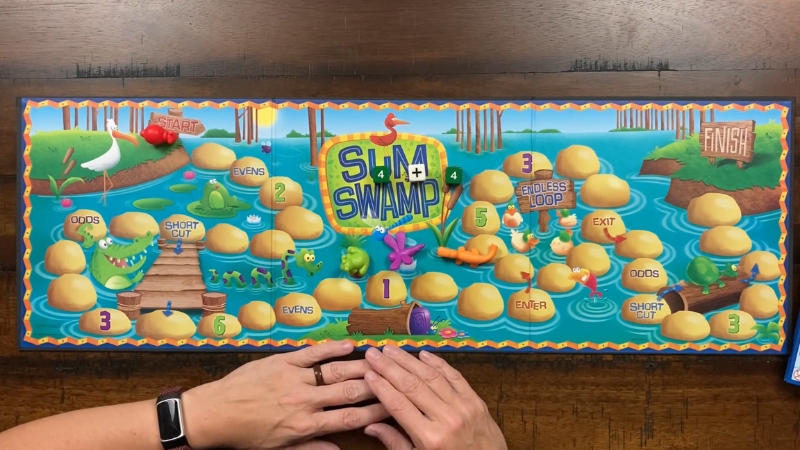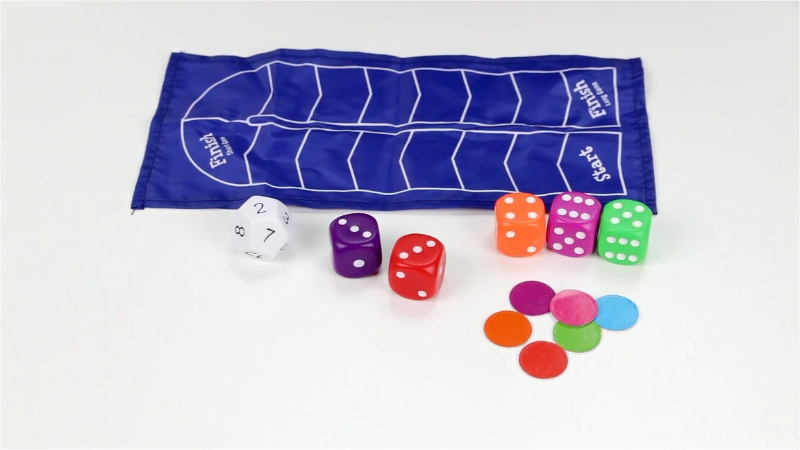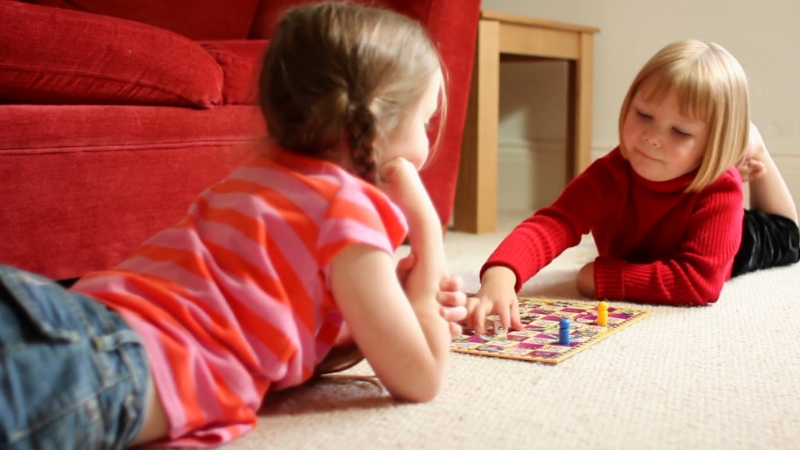
Share Post:
Ask most kids if they want to sit down and do some math, and you’ll likely be met with groans, eye rolls, or a flat-out “no.” But if you ask them if they want to play a board game, suddenly they’re interested, excited, and ready to play.
What if we told you that some of the most fun and popular board games are actually packed with math learning, hidden in plain sight?
From calculating probabilities and managing resources to budgeting in-game currency and recognizing patterns, board games are one of the most effective and enjoyable ways to teach math skills. And the best part? Kids don’t even realize they’re doing math.
Numerous educational studies have shown the impact of game-based learning. According to a report from the National Council of Teachers of Mathematics, games promote a positive attitude toward math, improve number sense, and increase student engagement.
When children are emotionally invested and having fun, they are more likely to retain what they’ve learned and apply it in real-world scenarios.
Table of Contents
Toggle1. Sum Swamp (Ages 4–7)

Designed with early learners in mind, Sum Swamp is a colorful, swamp-themed adventure game that introduces kids to the basics of addition and subtraction. Players roll a set of dice—two numbered and one with a plus or minus sign—and then solve the equation to move forward on the board.
Along the way, players encounter quirky swamp detours and obstacles, like needing to roll an even number to cross a bridge, reinforcing the concept of even and odd numbers.
What makes Sum Swamp especially effective is its repetitive and hands-on gameplay, which helps young children internalize basic math operations through muscle memory and visual cues. It doesn’t feel like a lesson—it feels like a race through a swamp, and that makes all the difference.
2. Uno (Ages 5+)
Uno may seem simple, but beneath its bright colors and fast-paced play lies a surprisingly rich mathematical experience. As players match numbers and colors to discard cards, they engage in number recognition, pattern matching, and sequencing.
The game also subtly teaches strategic thinking, as players must anticipate their opponents’ moves, count remaining cards, and choose the optimal time to play special cards like Reverse or Skip.
For younger children, simply matching the number 7 with another 7 builds early numeracy, while older kids can start to pick up on probability (e.g., what are the odds someone has a Draw Four?). Keeping score at the end of each round also introduces basic addition and comparison skills, making Uno a fun and flexible tool for both casual play and stealth learning.
3. Money Bags (Ages 7–10)
Money Bags is one of the best board games available for teaching kids real-world financial literacy. Set in a whimsical economy where players earn and exchange coins through everyday tasks, the game challenges children to identify coin values, add them together, and make change accurately.
As players move around the board collecting nickels, dimes, quarters, and more, they must frequently decide how to combine their earnings or how to reach exact amounts using the least number of coins. This tactile and visual approach makes abstract concepts like value equivalency much more concrete.
Not only does Money Bags sharpen mental math skills, but it also instills an early understanding of currency systems and personal finance—all without needing a lecture or workbook.
4. Ticket to Ride (Ages 8+)
Ticket to Ride is a multi-award-winning board game that blends geography, strategy, and math into one thrilling rail-building experience. Players collect colored train cards to complete routes between cities on a sprawling map, and each completed route earns points based on distance.
Math is embedded in almost every decision—calculating the most efficient path, comparing route lengths, planning future moves, and managing limited resources.
Scoring at the end involves multiplication and strategic thinking, as longer and more complex routes yield higher rewards.
The game also subtly encourages spatial reasoning and critical thinking as players decide whether to build directly, risk being blocked by another player, or detour for additional points. Ticket to Ride is a beautiful example of a game where kids plan, calculate, and strategize—all under the guise of a transcontinental train adventure.
5. Yahtzee (Ages 7+)
Few games demonstrate the real-life application of probability and statistics better than Yahtzee. In this classic dice game, players roll five dice to create specific combinations—three-of-a-kind, full house, straight, etc.—and score based on how well they meet those criteria.
The math learning happens in real time: players must add up dice totals, consider different combinations, and weigh risk vs. reward in each decision.
Do you go for that elusive Yahtzee (five of a kind) or play it safe and fill a lower-scoring category? Over time, kids develop an intuitive sense of number, probability and decision-making strategy.
Scoring also requires careful addition, reinforcing mental math in a competitive setting. Yahtzee is the ultimate game of calculated risk and quick calculations—perfect for older elementary students.
6. Rummikub (Ages 8+)
Rummikub offers a sophisticated take on tile-based gameplay, blending number theory and pattern recognition in a social setting. Players create sets of tiles by forming consecutive runs (like 3-4-5) or groups of the same number in different colors.
The strategy deepens as the game progresses—players can break apart and rearrange existing sets on the table to form new ones using their own tiles. This mechanic demands constant mental tracking, arithmetic manipulation, and creative sequencing.
Children practice numerical logic without realizing they’re engaging deeply with mathematical operations and pattern construction. Beyond the math, Rummikub also builds focus, patience, and problem-solving persistence, making it a top pick for parents and teachers alike.
7. Prime Climb (Ages 10+)
@madiproffitttt The math game series is BACK!!! Todays game is prime climb! #teacher #mathgames #mathgame #mathintervention #mathinterventionist #middleschool #middleschoolmath #mathteacher #mathidea #middleschoolteacher #primeclimb ♬ original sound – Madi Proffitt
For middle-grade students and budding math enthusiasts, Prime Climb is a revelation. This visually striking game revolves around navigating a colorful spiral number board using dice rolls and math operations. The twist?
Every number on the board is color-coded to reflect its prime factors, providing a vivid and intuitive visual of number theory in action. Players move their pawns by adding, subtracting, multiplying, or dividing their dice results, trying to reach the center of the board first.
Along the way, they reinforce multiplication tables, divisibility rules, and the fundamentals of prime factorization—all while blocking opponents and forming tactical plans. Prime Climb is one of the rare games that delivers direct, curriculum-aligned math content in a way that’s fast, competitive, and genuinely fun.
8. Monopoly (Ages 8+)
Although often accused of overstaying its welcome, Monopoly remains a foundational tool for teaching children money management and economic decision-making. Players engage with real-world math constantly: adding and subtracting rent, calculating change, purchasing properties, and strategizing around investments and trades.
The game’s slow pacing actually enhances its educational value by allowing for deep thinking about opportunity cost, budgeting, and long-term planning.
Kids also grapple with abstract concepts like asset depreciation, interest (mortgages), and cash flow management. While many parents play it nostalgically, educators have long recognized Monopoly as a resource for building numeracy and financial literacy through hands-on experience.
9. Math Dice (Ages 8–12)

Math Dice is a portable powerhouse of arithmetic exploration, perfect for classrooms or kitchen tables. The game begins with players rolling a pair of 12-sided dice to generate a “target number.”
They then roll five standard dice and try to combine those numbers using any operations (addition, subtraction, multiplication, division, or exponents) to get as close as possible to the target.
The open-ended nature of this challenge means each round is different, and kids are constantly adjusting their math strategies based on what’s rolled. The format rewards creative thinking and sharpens mental math abilities in a playful, fast-paced environment.
Teachers particularly love Math Dice for differentiated instruction—it can be simplified for beginners or scaled up for math whizzes.
10. 24 Game (Ages 9–13)
The 24 Game is like a brain workout wrapped in a deceptively simple challenge. Each card in the game shows four numbers, and the objective is to use arithmetic operations to arrive at the number 24.
Players can use any combination of addition, subtraction, multiplication, or division—but must use all four numbers exactly once. Although the goal sounds easy, it quickly becomes a test of rapid calculation and strategic planning.
Because the game is time-based, it fosters fast mental processing and fluency with basic operations, which are foundational for algebra and advanced math later on. The 24 Game doesn’t feel like traditional math—it feels like a high-stakes puzzle, and kids love trying to crack the code before their opponents.
How to Integrate Board Games Into Learning at Home

Whether you’re a parent looking to make after-school math practice more engaging or a homeschooler seeking fresh tools, integrating board games can transform your math routine. Here are some tips:
Rotate Games Weekly
Keep kids engaged by introducing new games regularly. Don’t overplay a single one—variety boosts engagement and math exposure.
Play Open-Ended
Don’t stress about winning or losing. Focus on strategy discussions, talking through moves, and exploring different outcomes.
Ask Math Questions
During the game, ask:
Play as a Family
Games become more fun and educational when played together. Model enthusiasm for math by showing you enjoy the challenge, too.
Math Skills by Game
Game
Math Concepts
Age Group
Sum Swamp
Addition, subtraction
4–7
Uno
Number matching, sequencing
5+
Money Bags
Currency, addition
7–10
Ticket to Ride
Counting, spatial reasoning
8+
Yahtzee
Probability, addition, multiplication
7+
Rummikub
Patterns, sequencing
8+
Prime Climb
Multiplication, primes, factors
10+
Monopoly
Budgeting, addition, risk
8+
Math Dice
Mental math, flexibility
8–12
24 Game
Arithmetic fluency
9–13
Settlers of Catan
Probability, strategy
10+
Blokus
Geometry, visual logic
8+
Equate
Algebra, equation-building
9+
Conclusion
Board games are more than just screen-free fun—they’re an incredible tool for teaching kids math through experience, not lectures. When children engage with numbers through hands-on play, they build confidence, curiosity, and competence without even realizing it.
Whether you’re working with a reluctant learner or just want to reinforce classroom concepts at home, adding a few math-rich games to your collection is a smart move. After all, who says learning can’t be a game?
Related Posts:











